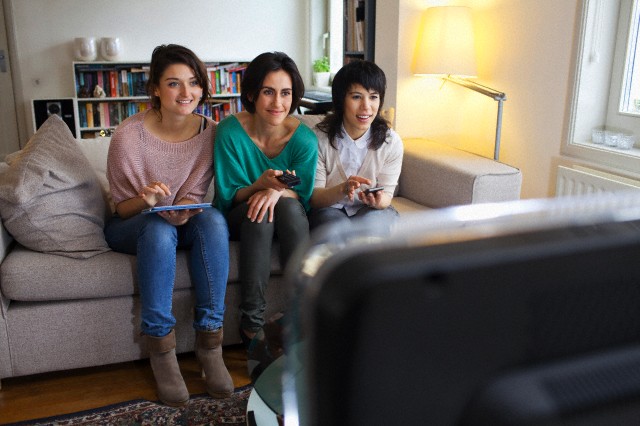Interactive TV: The Power is In Your Hand

Marketers have the ability today to let TV viewers quickly interact and buy without a complicated interface. As programmatic and addressable TV advertising gain headlines, there’s mounting talk about connected TV, and with it the possibility of commerce at last from the world’s largest advertising medium. Connected TV was even one of the themes of the ANA conference “Masters of Media” a few weeks ago in Florida. The presumption is that connected TV will finally cross the chasm between viewing and shopping by allowing viewers to interact with ads to get information and buy products in the moment.
“If we can ever get to that direct link to buy, that would be the Holy Grail to me,” Johnson & Johnson CMO Alison Lewis said of TV at CES in January.
The Holy Grail presumes we’re a technology revolution away from ads that truly sell. That’s understandable, given the many practical hurdles to creating a successful interactive linear TV campaign. Agencies and media have to navigate a maze of incompatible set-top and OTT boxes. Agencies have to create and approve ads unique to each delivery platform, including new co-viewing app experiences, and then aggregate reporting across these walled systems. And, most importantly, viewers need to use and learn new remotes, interfaces and often need to sync up. This all sounds like a prescription for less interaction and negative ROI -- and it’s unnecessary.
We already have a platform that consumers like, that advertisers can use easily, and that can work across all TV systems and formats as well as many other legacy media. Of course, I’m talking about the mobile device.
Most of us can’t go long without speaking, texting, emailing, sharing or surfing, and 87% of us already use our devices while watching linear TV. Factor in the growth of mobile commerce and smartphones and tablets form the obvious answer for linear TV interaction.
A focused mobile app for activating offers from linear TV ads, programming and content can be more effective than a TV remote or sifting through multiple co-viewing apps. It can allow viewers to make purchases, receive coupons, get information or even click to call faster. It can store all of the offers and information in one place. There’s no need for a remote, WiFi connection or switching between apps; and mobile ad blocking does not apply.
Ads in any medium from TV to print to outdoor and in-store can be tagged with a mobile voice keyword. Because voice keywords can be bought on an accountable CPC basis, like search, there is little waste or fraud. When all lead to one app, response rates, audience quality and activation increase. When people speak a keyword into an app -- instead of relying on a device to record a commercial snippet -- they tend to recall an associated brand message better, and response rates go up. If it’s a dedicated e-commerce app, without the added activities of a content or social app, response increases even more, and GPS can then deliver clear, real-time reporting on place and time of engagement and post-engagement action down to a hyper-local basis.
Today, 20th Television enables advertisers to put voice keyword prompts in commercials alerting viewers to product offers and information they can activate through the WiO app. So, in a very real sense, the interactive future is here already.
We don’t need smart TVs, OTTs and cable boxes to achieve interactive TV at scale. We need to get smarter about how we use mobile devices. The promise of a connected future across all media requires only that we exploit the power of voice on the one device consumers increasingly can't live without.
Image at top courtesy of Corbis. The opinions and points of view expressed in this commentary are exclusively the views of the author and do not necessarily represent the views of MediaVillage/MyersBizNet management or associated bloggers.


